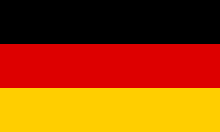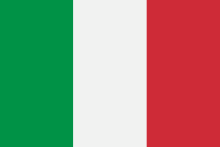Master Your Bank Balance: Smart Cash Flow Guide

Mastering Your Bank Balance: The Secret to Smarter Cash Flow Management
Every business owner knows that money in the bank doesn't always mean you're financially healthy. What really matters is understanding what your bank balance says about your business — today and tomorrow.
Your bank balance isn't just a number; it's a snapshot of how your business is performing and a tool for planning what comes next. Yet too often, entrepreneurs overlook it until cash starts running short.
Let's change that.
In this guide, we'll break down what your bank balance really means, how to use it to your advantage, and how modern tools like Trezy's cash flow management solution can make managing it effortless.
1. What Your Bank Balance Really Tells You
Your bank balance reflects the total cash available in your account after all payments and deposits have been processed. In simple terms:
Bank Balance = Credits (money in) – Debits (money out)
If your balance is positive, you have funds available. If it's negative, you're running an overdraft — a sign that your cash flow might need attention.
But the bank balance isn't just about what's left today. It's a financial signal. It helps you spot when:
- sales are slowing,
- expenses are creeping up,
- or clients are taking longer to pay.
In short: your balance shows how healthy your cash cycle is.
2. Bank Balance vs. Forecast Balance: Two Sides of the Same Coin
A lot of entrepreneurs confuse these two — and that's where cash flow trouble often begins.
- The bank balance shows where you stand right now.
- The forecast balance predicts where you'll be in the future based on planned income and expenses.
Imagine you're driving:
- Your bank balance is your speedometer — it tells you how fast you're going.
- Your forecast balance is your GPS — it shows where you're headed.
You need both to steer your business with confidence.
With Trezy, you can see both figures side by side — your actual cash position and your upcoming financial outlook — so you're never surprised by what's coming.
3. Why It's So Important to Track It
Ignoring your bank balance can create blind spots that lead to bigger problems later: missed payments, cash shortages, or even legal issues.
By tracking it regularly, you can:
- Detect unusual transactions or missing entries early.
- Plan spending around your real financial capacity.
- Stay compliant with accurate bookkeeping.
- Make decisions based on facts, not guesswork.
It's not about obsessing over numbers — it's about giving yourself visibility and control. Our transaction management features make this tracking seamless and automatic.
4. Common Mistakes (and How to Avoid Them)
Even the most diligent business owners face balance discrepancies. The usual suspects?
- Timing delays: your client's payment hit the bank, but not yet your accounting system.
- Manual errors: missed invoices, duplicate payments, or misclassified transactions.
- Neglected reconciliations: when accounts aren't checked often enough.
The best fix is automation. Trezy automatically syncs your bank transactions and reconciles them with your accounting data — reducing human error and keeping your balance reliable. Check out our document management system to keep all your financial records organized.
5. How to Use Your Bank Balance as a Decision Tool
Your bank balance can do more than show what's in the account — it can help you plan strategically.
Here's how to use it wisely:
- Spot trends: is your balance consistently falling at the end of each month? That might mean predictable expenses without enough buffer.
- Forecast cash flow: combine today's balance with your future transactions to see when money might get tight.
- Optimize timing: schedule supplier payments or investments when your balance is strongest. Our supplier management tools help you coordinate payments efficiently.
- Prevent overdrafts: set alerts to know when your cash is below a safe threshold.
When managed well, your bank balance becomes an early warning system — and a strategic advantage.
6. From Balance to Forecast: Building Visibility with Trezy
Trezy takes the guesswork out of cash flow management. Instead of juggling spreadsheets or switching between banking apps, Trezy connects directly to your bank accounts and updates your cash position in real time.
You can:
- View your daily cash balance and forecast at a glance.
- Get alerts when your balance drops below a chosen threshold.
- Automatically reconcile your transactions.
- Visualize how today's numbers affect next week's financial health.
It's like having a financial co-pilot keeping your business on track — without the manual work. Our performance analytics give you deeper insights into your financial patterns.
7. Pro Tips for Healthy Cash Flow
- Check your balance daily. Small habits prevent big surprises.
- Automate where possible. Manual bookkeeping costs time and accuracy.
- Understand your payment cycles. Identify when money tends to leave or arrive.
- Keep an emergency buffer. Even a small reserve can save you from short-term stress.
- Review monthly trends. A healthy balance isn't static — it evolves with your business.
Final Thoughts
Your bank balance is more than a financial number — it's a window into your company's rhythm.
By understanding it, tracking it, and leveraging automation tools like Trezy, you'll always know where you stand and where you're heading.
Control your cash flow, anticipate changes, and make decisions with confidence — that's how you build a business that lasts.








